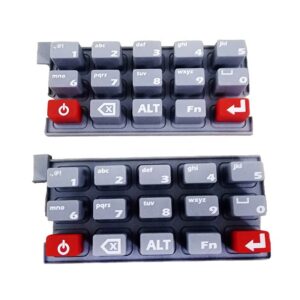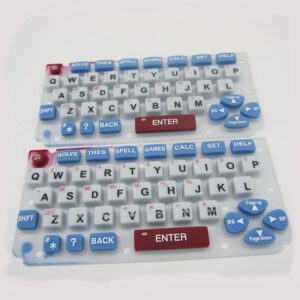Incorporating silicone rubber keypads into your product design can be transformative, especially in industries like consumer electronics, automotive, medical devices, and industrial equipment. These keypads are prized for their durability, flexibility, and resistance to environmental factors. However, to ensure your product meets specific requirements and user expectations, prototyping is crucial. This blog explores the significant benefits of prototyping silicone rubber keypads before finalizing your design.
Design Validation
Prototyping provides an opportunity to validate your keypad design early in the development process. By creating a physical model, you can test the appearance, feel, and functionality of the keypad. This step ensures that your design specifications—such as size, shape, and tactile feedback—are met. Catching potential design flaws or issues at this stage prevents costly problems during manufacturing.
User Experience Testing
The success of your product heavily relies on user experience. Since silicone rubber keypads are often used in devices requiring frequent interaction (like remote controls, medical devices, or industrial equipment), prototyping allows you to gather valuable feedback from potential users or stakeholders. This feedback helps refine the keypad design, enhancing user satisfaction by optimizing button layout, actuation force, and tactile response.
Material Selection
Customizing silicone rubber keypads involves selecting appropriate material properties, such as hardness, durometer, and color. Prototyping enables experimentation with different silicone formulations to find the optimal material for your application. Testing various materials ensures you choose the best combination of durability, tactile feedback, and resistance to environmental factors like moisture and temperature.
Functionality Testing
Prototyping allows for thorough testing of the keypad’s functionality, including its electrical properties. Verifying that the keypad’s conductive traces and contacts work correctly is essential. This step ensures that buttons register key presses reliably and consistently, minimizing the risk of defects in the final product.
Rapid Iteration
One of the key benefits of prototyping is the ability to quickly iterate on your design. If issues arise or feedback suggests improvements, changes can be made to the prototype without significant cost or delay. This iterative process helps refine the design until the desired performance and user experience are achieved.
Cost Savings
Although prototyping has an initial cost, it can lead to long-term savings. Identifying and resolving design issues early avoids expensive modifications and production delays later. Additionally, prototyping can optimize the manufacturing process, potentially reducing production costs.
Reduced Time-to-Market
Prototyping streamlines the design and validation phases, accelerating the product development timeline. By quickly identifying and addressing design flaws or user experience issues, you can move to final production sooner, reducing time-to-market and gaining a competitive advantage.
Prototyping silicone rubber keypads is a critical step in product development, offering numerous benefits. It validates your design, optimizes material selection, enhances functionality, improves user experience, and ultimately saves time and money. Investing in prototyping ensures your silicone rubber keypad meets the highest standards of quality and performance, leading to a successful product launch.
Our Capabilities


![]()
At YJCPolymer, we provide engineering support for early design considerations and offer rapid prototyping, delivering parts within as little as a two-week lead time. We offer a variety of silicone rubber keypads customized according to your needs. Reach out to our team with any questions about your silicone rubber products, and let us help bring your project to fruition.